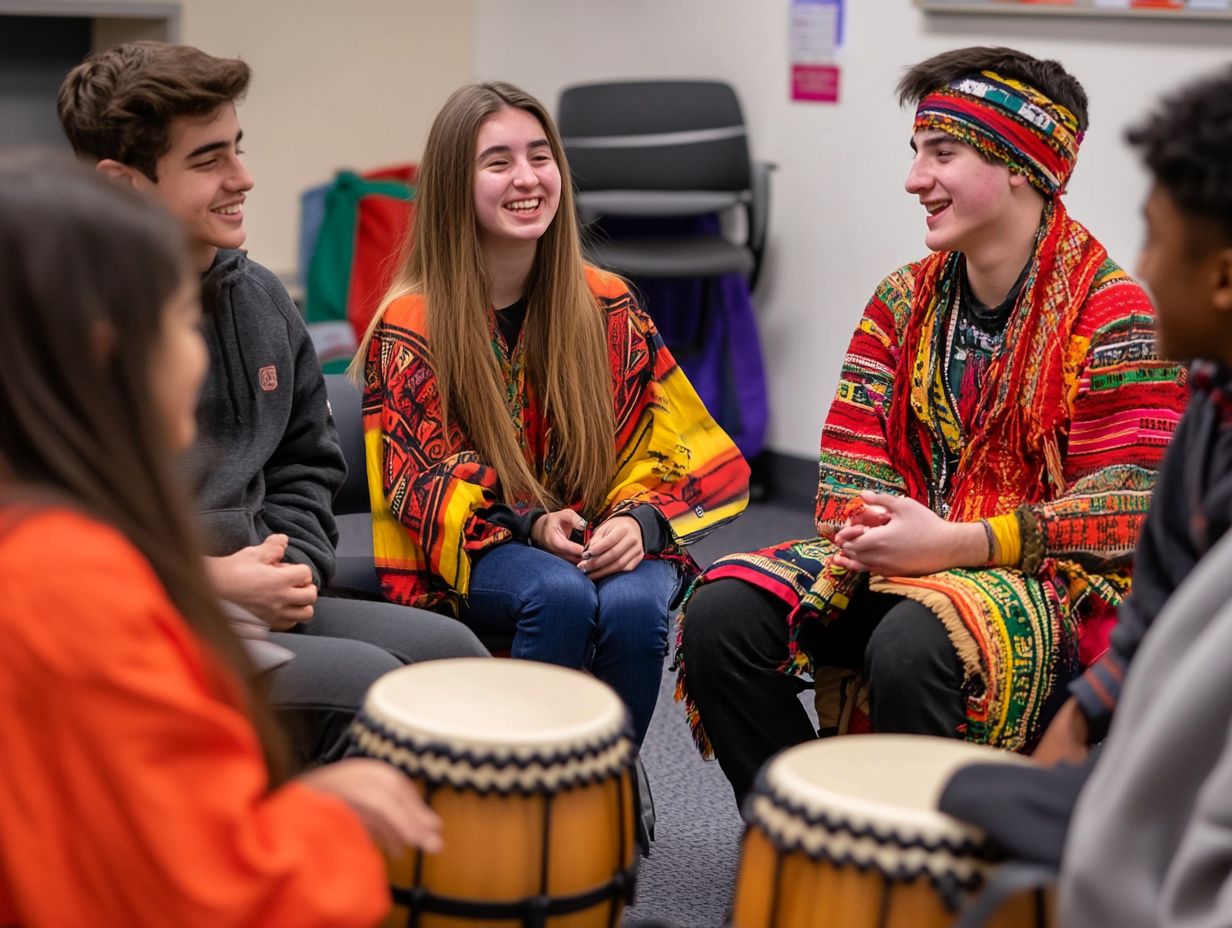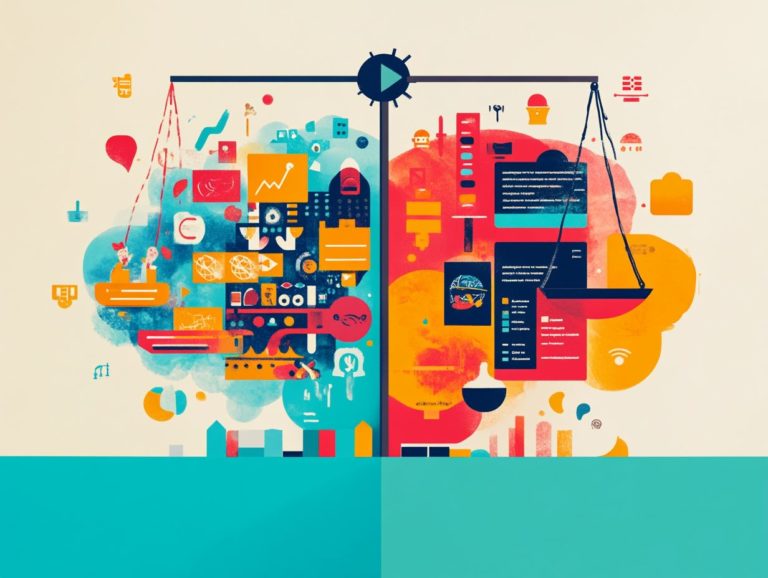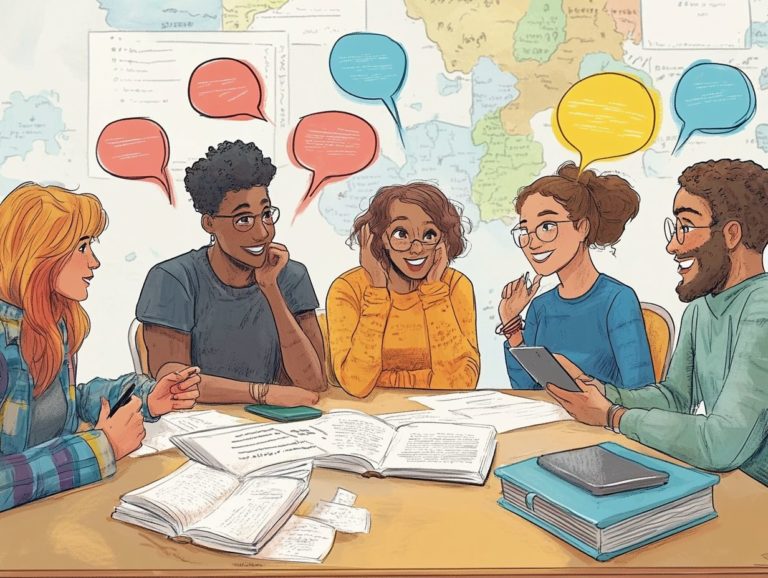the role of cultural resources in language learning
Language learning is more than just knowing vocabulary and grammar. It’s deeply connected to the culture that brings those words to life.
Understanding cultural nuances can boost your language skills and cultural understanding. This offers a richer, more immersive experience.
This article explores the crucial role of culture in language learning. It highlights various cultural tools and activities you can integrate into your journey.
Discover how cultural insights can elevate your language learning!
Contents
- Key Takeaways:
- The Importance of Cultural Resources in Language Learning
- Benefits of Incorporating Cultural Resources in Language Learning
- Types of Cultural Resources for Language Learning
- Strategies for Using Cultural Resources in Language Learning
- Challenges and Solutions for Cultural Resources
- Frequently Asked Questions
- What are cultural resources in language learning?
- How do cultural resources impact language learning?
- Can cultural resources supplement traditional language learning methods?
- How can teachers and educators utilize cultural resources in language learning?
- What are some challenges of incorporating cultural resources in language learning?
- Are there any benefits to using cultural resources in language learning?
Key Takeaways:

Cultural resources are vital for language learning. They provide a deeper understanding of language and its cultural context.
Using authentic materials and engaging in cultural activities can significantly enhance your language proficiency.
The Importance of Cultural Resources in Language Learning
Cultural resources are essential in language learning, as they help you navigate communication and build cultural understanding, including the role of folklore in language education.
Integrating cultural context into language lessons engages learners effectively. It fosters deeper connections to the language and its cultures.
In our global society, having strong cultural knowledge is crucial for effective communication. This makes cultural resources a key part of modern education.
Understanding the Role of Culture in Language Acquisition
Culture plays a vital role in how you learn a language. It shapes your understanding and use of language in different contexts.
Cultural nuances impact how you learn vocabulary and communicate. These skills are essential for successful interactions.
Language educators can help bridge the gap between culture and language. They integrate cultural insights into lessons to deepen your understanding.
For example, learning expressions tied to cultural heritage, like the Spanish “tener un coraz n de oro” (to have a heart of gold), shows how culture influences language meaning.
To improve your skills, educators can use real-life scenarios, like discussing local festivals. Group discussions or role-playing can bring cultural aspects to life and enhance your appreciation.
This method enriches your learning experience, making it more rewarding.
Benefits of Incorporating Cultural Resources in Language Learning
Adding cultural resources to language learning brings numerous benefits. It significantly enhances both your learning journey and language skills.
By engaging with authentic materials and intercultural exchanges, you build your cultural competence and communication skills. These are vital in today s interconnected world.
These resources also foster empathy and understanding. They allow you to appreciate diverse perspectives, enriching your overall learning experience.
Enhancing Language Proficiency and Cultural Competence

Enhancing your language proficiency and cultural competence is a primary goal in modern language education. You can achieve this effectively through the integration of cultural resources.
By utilizing authentic materials and cultural immersion strategies, you can create an engaging learning environment that fosters effective communication and a deeper understanding of cultural nuances.
As you explore cultural connections, you ll build a solid foundation that supports your language skills and cultural insights. Implementing thematic units centered around cultural topics allows you to delve into specific subjects while honing your language skills.
For instance, combining cuisine, history, and art offers a rich context for vocabulary acquisition and conversational practice. Inviting guest speakers from diverse backgrounds to share their experiences boosts this engagement, helping you grasp the real-world applications of your language skills.
These experiences enhance your language skills and spark empathy, fostering a classroom environment that values diversity and encourages open dialogue.
Types of Cultural Resources for Language Learning
You have a wealth of cultural resources at your fingertips for language learning. Each presents distinct avenues to enrich your educational journey.
Authentic materials think literature, films, and music immerse you in real-world language use and cultural nuances. This exposure enhances your cultural awareness.
Engaging in real-life experiences like study abroad programs or community activities helps you practice your language skills while fully embracing the culture of the target language. This approach elevates your learning experience.
Authentic Materials and Real-Life Experiences
Authentic materials and real-life experiences are essential in your language education journey. They offer you contexts to practice and refine your language skills. When you engage with authentic materials like news articles, films, and music you re not just learning vocabulary; you re diving into the rich cultural tapestry that the language embodies.
This exposure enhances your vocabulary and deepens your cultural understanding. Real-life experiences, such as cultural exchanges or language immersion programs, allow you to interact with native speakers, sharpening your communication skills and fostering a deeper connection to the culture.
Incorporating these resources into your lessons transforms your learning experience. Picture discussing the unique aspects of a popular local film or participating in a language exchange program that lets you practice speaking and listening in a natural environment, connecting you with genuine voices.
Programs like homestays and volunteer opportunities abroad present invaluable chances to experience the language in its native context. This makes the words come alive and turns your learning into something both enjoyable and meaningful.
Through these methods, you will gain confidence and develop a lifelong appreciation for the language and the vibrant cultures it represents.
Strategies for Using Cultural Resources in Language Learning
Implementing effective strategies for utilizing cultural resources can significantly elevate your students’ engagement and comprehension.
You can employ diverse teaching practices that incorporate cultural activities, such as themed discussions, project-based learning, and interactive dialogues. These approaches encourage your students to actively participate and form meaningful connections with the material.
By crafting a dynamic learning experience that weaves in cultural insights, you enhance not only the educational outcomes but also the overall language learning journey for your students.
Start exploring cultural resources today and elevate your language learning experience!
Using Cultural Activities and Reflection

Using cultural activities and reflection in your language learning journey boosts cultural awareness and engagement. Activities like role plays and interactive projects immerse you in the language while prompting reflection on your experiences.
This approach enhances your motivation and fosters empathy. It also deepens your understanding of diverse cultural backgrounds, enriching your educational experience.
For instance, role plays that simulate real-life interactions from various cultures provide insights into social norms. Engaging in comparative projects, where you explore cultural traditions, sparks discussions that reveal different perspectives.
Reflection is key; after each activity, take time to express your feelings and insights. This reinforces your knowledge and strengthens your connection to the material.
By nurturing an environment for sharing and reflection, you improve your language skills and develop a sense of global citizenship. This enriches your entire educational journey.
Challenges and Solutions for Cultural Resources
The benefits of using cultural resources in language learning are clear. However, challenges can arise.
Factors like limited access to authentic materials and varying levels of cultural awareness among students can hinder integration.
You can tackle these challenges by using targeted strategies, such as selecting appropriate educational resources and tailoring your teaching methods. This approach fosters an inclusive language learning environment.
Addressing Barriers in Cultural Resources Integration
Recognizing barriers in integrating cultural resources is crucial for your success. Diverse student backgrounds and differing expectations can present challenges.
By implementing tailored teaching strategies, you promote effective communication. This ensures all students benefit from enriching cultural experiences.
Identify barriers as your first step toward equitable education. Use technology to broaden access to cultural materials. Consider partnerships with community organizations to enhance your curriculum.
Encouraging student dialogue fosters a deeper appreciation of backgrounds. This creates a learning space where diversity is celebrated.
Your dedication to inclusivity supports language acquisition and enriches the educational experience for everyone.
Frequently Asked Questions
What are cultural resources in language learning?

Cultural resources in language learning include customs, traditions, art, music, literature, and other aspects of culture that help you understand the language better.
How do cultural resources impact language learning?
Cultural resources are essential as they provide context and enhance understanding of the language. Immersing yourself in cultural aspects helps you grasp nuances and subtleties.
Can cultural resources supplement traditional language learning methods?
Yes, cultural resources can enhance traditional language learning methods. They make the learning process more engaging and effective by allowing you to explore the culture while learning the language.
How can teachers and educators utilize cultural resources in language learning?
Teachers can enhance language learning by incorporating cultural resources into their lessons.
This includes using literature, music, and real-life cultural experiences as teaching tools.
What are some challenges of incorporating cultural resources in language learning?
Challenges include limited access to authentic materials and finding suitable resources for different skill levels.
Cultural misunderstandings or biases may also arise.
Are there any benefits to using cultural resources in language learning?
Yes! Using cultural resources helps students gain a deeper understanding of the target language and enhances their appreciation for it.
They also improve language skills and make learning more enjoyable.






